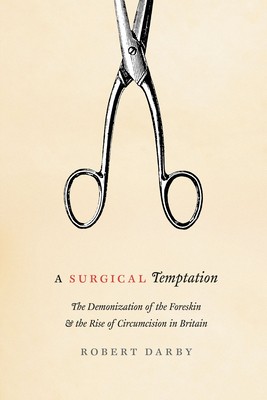
- We will send in 10–14 business days.
- Author: Robert Darby
- Publisher: University of Chicago Press
- ISBN-10: 022610110X
- ISBN-13: 9780226101101
- Format: 15 x 22.6 x 2.3 cm, softcover
- Language: English
- SAVE -10% with code: EXTRA
Reviews
Description
In the eighteenth century, the Western world viewed circumcision as an embarrassing disfigurement peculiar to Jews. A century later, British doctors urged parents to circumcise their sons as a routine precaution against every imaginable sexual dysfunction, from syphilis and phimosis to masturbation and bed-wetting. Thirty years later the procedure again came under hostile scrutiny, culminating in its disappearance during the 1960s.
Why Britain adopted a practice it had traditionally abhorred and then abandoned it after only two generations is the subject of A Surgical Temptation. Robert Darby reveals that circumcision has always been related to the question of how to control male sexuality. This study explores the process by which the male genitals, and the foreskin especially, were pathologized, while offering glimpses into the lives of such figures as James Boswell, John Maynard Keynes, and W. H. Auden. Examining the development of knowledge about genital anatomy, concepts of health, sexual morality, the rise of the medical profession, and the nature of disease, Darby shows how these factors transformed attitudes toward the male body and its management and played a vital role in the emergence of modern medicine.EXTRA 10 % discount with code: EXTRA
The promotion ends in 16d.17:39:53
The discount code is valid when purchasing from 10 €. Discounts do not stack.
- Author: Robert Darby
- Publisher: University of Chicago Press
- ISBN-10: 022610110X
- ISBN-13: 9780226101101
- Format: 15 x 22.6 x 2.3 cm, softcover
- Language: English English
In the eighteenth century, the Western world viewed circumcision as an embarrassing disfigurement peculiar to Jews. A century later, British doctors urged parents to circumcise their sons as a routine precaution against every imaginable sexual dysfunction, from syphilis and phimosis to masturbation and bed-wetting. Thirty years later the procedure again came under hostile scrutiny, culminating in its disappearance during the 1960s.
Why Britain adopted a practice it had traditionally abhorred and then abandoned it after only two generations is the subject of A Surgical Temptation. Robert Darby reveals that circumcision has always been related to the question of how to control male sexuality. This study explores the process by which the male genitals, and the foreskin especially, were pathologized, while offering glimpses into the lives of such figures as James Boswell, John Maynard Keynes, and W. H. Auden. Examining the development of knowledge about genital anatomy, concepts of health, sexual morality, the rise of the medical profession, and the nature of disease, Darby shows how these factors transformed attitudes toward the male body and its management and played a vital role in the emergence of modern medicine.

Reviews